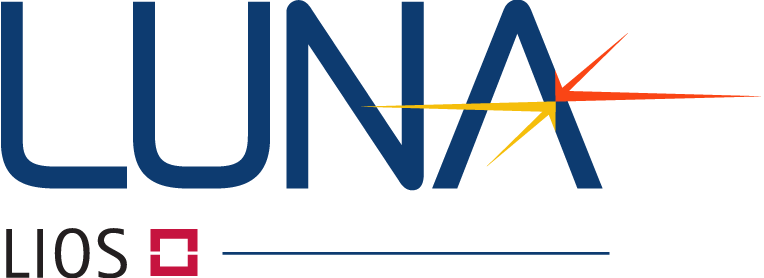Our temperature and strain detection systems use optical fibers as line-shaped sensors. We use different techniques to establish where – along the fiber – unforeseen events occur. Precision is important, so we need to make sure we provide a high spatial resolution.
We send light through the sensor and measure the scattering signals in a receiver to locate abnormalities.
Every scattering signal that is generated at a remote location – along the fiber – arrives back at the receiver with a distinct time delay that depends on the exciting laser radiation. The time delay corresponds to twice the distance times the speed of light in the fiber.
Optical Time-Domain Reflectometry and Optical Frequency-Domain Reflectometry
The most straightforward localization technique is to send a short light pulse into the fiber, record the backscattered signals over time and convert the time to distance using the relationship mentioned above – just like the well-known RADAR system. This is called Optical Time-Domain Reflectometry, OTDR.
Another technique is to modulate the amplitude of a continuous laser at specific frequencies, to record phase and amplitude for each frequency and to inverse Fourier transform the frequency data into signals over time (and thus distance). This is called (incoherent) Optical Frequency-Domain Reflectometry, OFDR.
In the end, both techniques provide the same type of signal (backscattering intensity over distance), each of them has its strengths and weaknesses in different application areas. With OFDR we avoid high peak powers from the laser and get a low-noise signal in a short time. OTDR, especially when used with the pulse-code refinement, provides a high dynamic range.
Unique for Luna, we can choose between either of the two advanced localization technologies to obtain the best result for each type of distributed fiber-optic sensing interrogator.
High Reliability and Industrial Strength
Our interrogation systems are made from robust and inexpensive components approved for the telecom industry which makes it possible for us to provide sophisticated fiber optic temperature or strain surveillance systems at commodity prices.
We use laser diodes that have been thoroughly type-tested according to the Telcordia GR-468 standard and are fulfilling telecom standards. Also, our entire systems have been comprehensively evaluated by several independent, international bodies (e.g. the Germany VdS, the association of German asset insurers) who have carried out – among other – EMI tests and endurance tests at accelerated aging environments (rapid temperature change, vibration, shock, etc.).
